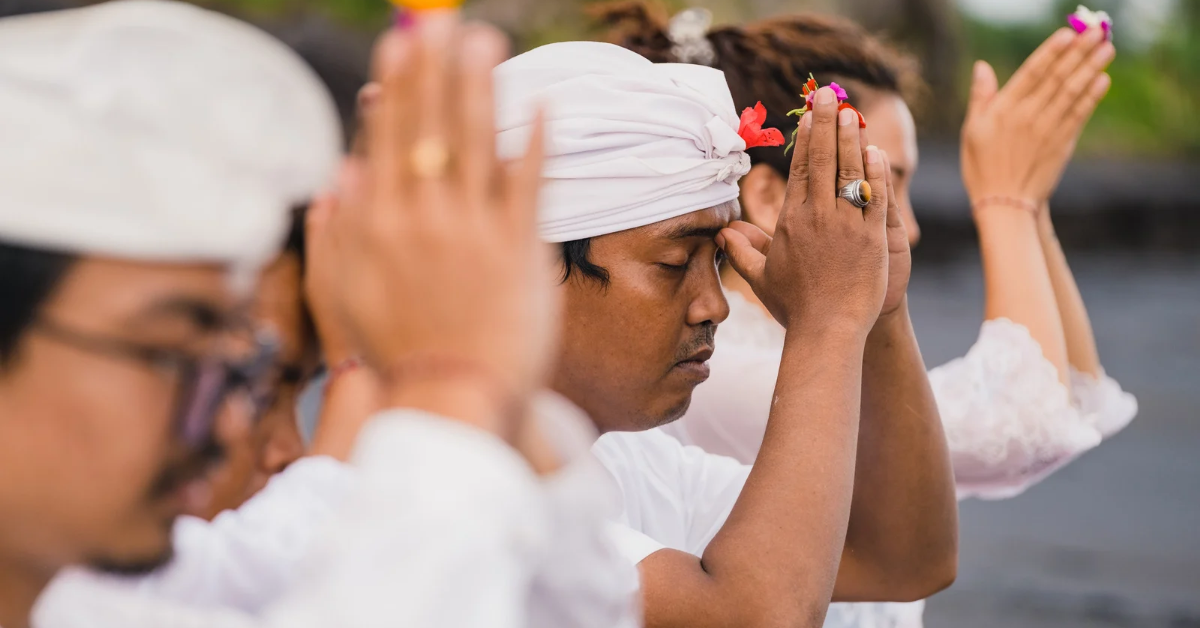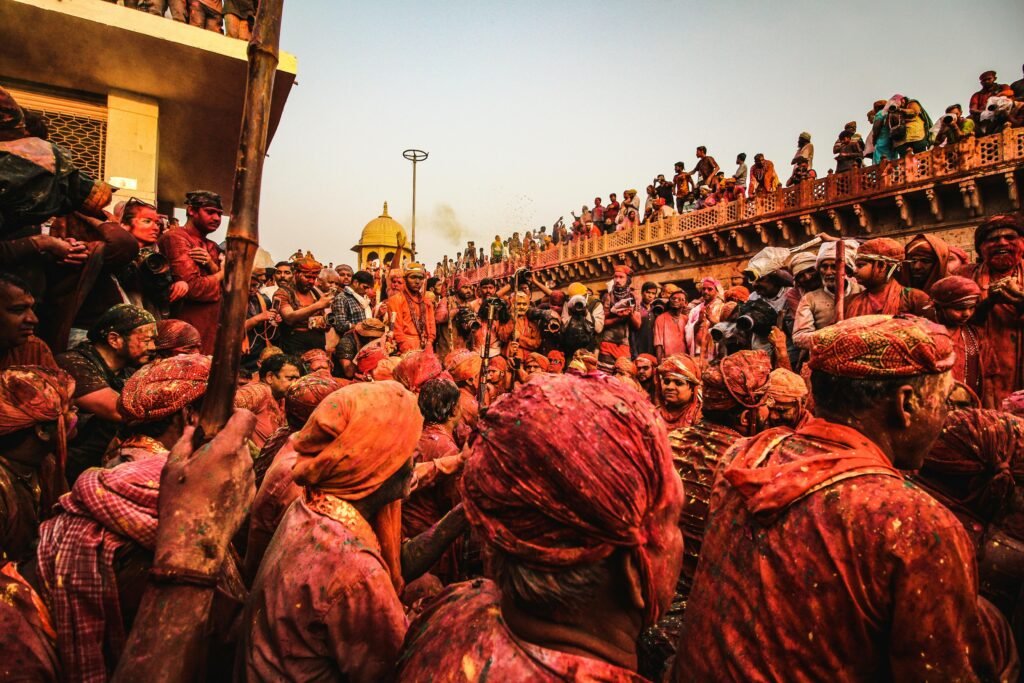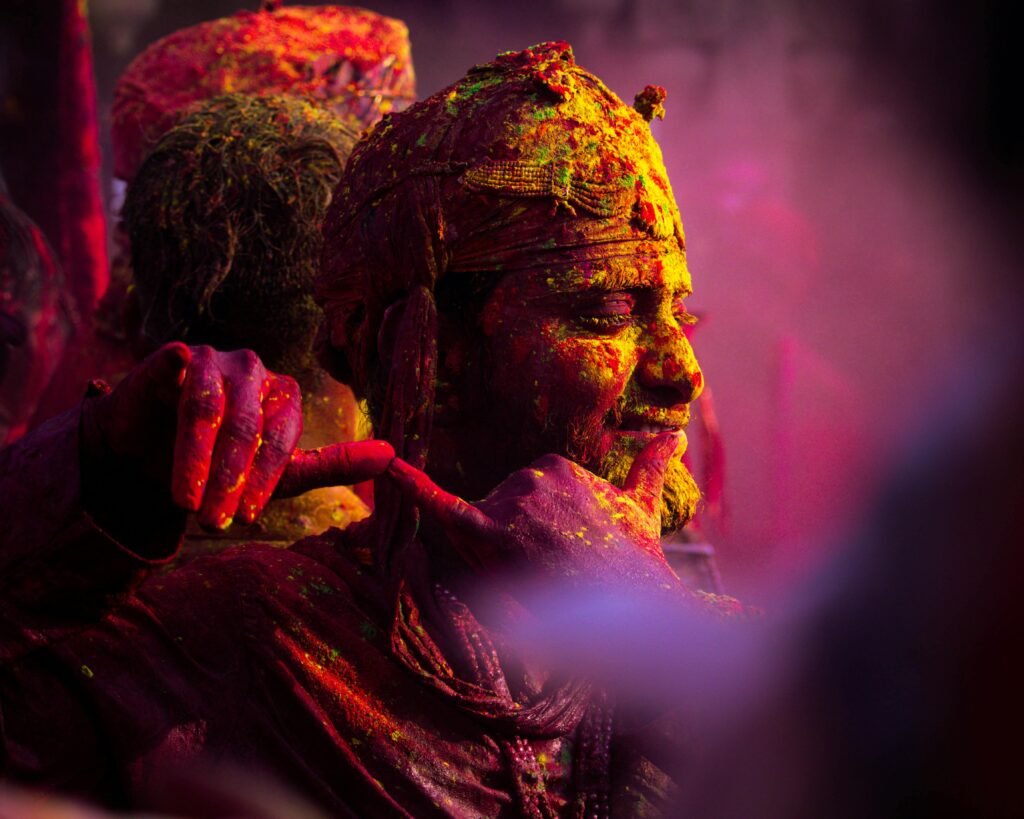
Introduction: A Glimpse into Divine Heritage
Tucked away in the serene Himalayas, the Lakshana Devi Temple Bharmour stands as a beacon of devotion and history. Located in Bharmour, within Himachal Pradesh’s Chamba district, this temple is a spiritual haven for many.
Constructed in the 7th century during King Meru Varman’s reign, it’s among India’s oldest wooden temples. The temple’s wooden architecture showcases intricate carvings, reflecting the artistry of the post-Gupta era.
Dedicated to Goddess Durga in her Mahishasuramardini form, the temple holds immense religious significance. Legends speak of the goddess’s victory over the buffalo demon Mahishasura, symbolizing the triumph of good over evil.
Nestled at an elevation of 2,135 meters, the temple offers breathtaking views of the surrounding mountains. It’s part of the Chaurasi Temple complex, which houses 84 shrines, each with its unique story.
Visitors often describe a profound sense of peace upon entering the temple premises. The scent of incense, the soft chants, and the cool mountain breeze create a meditative ambiance.
For those seeking a deeper connection, the Divya Kripa app provides insights into the temple’s history, rituals, and live darshan. It’s a valuable resource for devotees and travelers alike.
Whether you’re a spiritual seeker or a history enthusiast, the Lakshana Devi Temple Bharmour offers a unique blend of devotion and heritage. It’s not just a temple; it’s a journey through time and faith.
Historical Context: Origins Rooted in Devotion
The Lakshana Devi Temple Bharmour isn’t just a structure; it’s a testament to devotion and history. Built around 650 AD during King Meru Varman’s reign, this temple stands as a symbol of enduring faith. As the oldest surviving wooden temple in India, it showcases the architectural brilliance of the post-Gupta era.
Situated in Bharmour, once the capital of the ancient Champa kingdom, the temple is part of the renowned Chaurasi Temple complex. This complex houses 84 shrines, each echoing tales of devotion and spirituality.
Dedicated to Goddess Lakshana Devi, a revered form of Durga, the temple holds immense spiritual significance. Legends narrate that King Meru Varman constructed this temple to honor the goddess, seeking her blessings for his kingdom.
The temple’s architecture is a marvel in itself. Intricate wooden carvings adorn its interiors, depicting themes from Shaivism and Vaishnavism. These carvings not only showcase artistic excellence but also narrate stories from ancient scriptures.
A notable feature is the brass idol of Goddess Lakshana Devi in her Mahishasuramardini form. She is depicted with four arms, wielding a trident, sword, bell, and holding the demon’s tail, symbolizing the triumph of good over evil.
Visiting the Lakshana Devi Temple Bharmour offers more than just a glimpse into history; it’s an experience of spiritual serenity. The temple stands as a beacon of devotion, inviting you to immerse yourself in its timeless legacy.
Architectural Marvel: A Testament to Ancient Craftsmanship

The Lakshana Devi Temple Bharmour is a remarkable example of ancient wooden architecture in India. Constructed in the 7th century during the reign of King Meru Varman, this temple stands as a testament to the craftsmanship of the post-Gupta era. Its rectangular plan and slate-roofed structure are characteristic features of the time.
The temple’s wooden architecture showcases intricate carvings on its pillars, doorways, and ceilings. These carvings depict motifs from Shaivism and Vaishnavism, including figures of deities like Shiva, Vishnu, and Skanda. The entrance features panels with river goddesses Ganga and Yamuna, symbolizing purity and sanctity.
Inside, the temple follows a sandhara plan, featuring an ardha-mandapa, a mukhya-mandapa, a circumambulatory path, and a rectangular sanctum. The mukhya-mandapa is supported by six square pillars, each adorned with detailed carvings. The roof is pitch gabled and topped with slates, designed to withstand the region’s heavy snowfall.
Over the centuries, preservation efforts have been undertaken to maintain the temple’s original artistry. The Archaeological Survey of India has played a significant role in cleaning and restoring the temple’s facade, revealing details that were previously obscured. These efforts ensure that the temple’s historical and spiritual significance endures for future generations.
Visiting the Lakshana Devi Temple Bharmour offers a unique glimpse into India’s rich architectural heritage. The temple’s intricate woodwork and enduring structure reflect the devotion and skill of ancient artisans. It’s a place where history and spirituality converge, inviting you to explore and appreciate its timeless beauty.
Divine Iconography: The Form of Mahishasuramardini
The Lakshana Devi Temple Bharmour houses a remarkable brass idol of Goddess Lakshana Devi in her Mahishasuramardini form. This depiction aligns closely with descriptions from ancient texts like the Vishnudharmottara Purana.
In this form, the goddess is portrayed with four arms, each holding symbolic weapons: a trident, a sword, a bell, and grasping the tail of the buffalo demon, Mahishasura. Her right foot is poised on the demon’s head, signifying the triumph of good over evil.
The idol’s iconography is significant, as it is one of the few known images that match the detailed descriptions found in the Vishnudharmottara Purana. This alignment underscores the temple’s importance in preserving ancient artistic traditions.
The depiction of Mahishasura in the idol is also noteworthy. He is shown in his buffalo form, a representation that emphasizes his strength and the goddess’s power in overcoming formidable challenges.
Visiting the Lakshana Devi Temple Bharmour offers not only a spiritual experience but also a glimpse into the rich tapestry of Hindu mythology and art. The idol stands as a testament to the enduring legacy of devotion and the artistic excellence of ancient craftsmen.
For those interested in exploring more about such temples and their histories, the Divya Kripa app provides detailed information, live darshan, and insights into various rituals and festivals. It’s a valuable resource for deepening one’s understanding and connection to these sacred sites.
Spiritual Significance: A Pillar of Devotion
The Lakshana Devi Temple Bharmour is more than an ancient structure; it’s a vibrant center of devotion and spiritual life. For centuries, devotees have gathered here to seek blessings from Goddess Lakshana Devi, a revered form of Durga.
During festivals like Navratri, the temple becomes a hub of activity. Devotees participate in special rituals and prayers, celebrating the goddess’s triumph over evil. The temple’s atmosphere during these times is filled with devotion and communal harmony.
The temple’s spiritual significance is further enhanced by its inclusion in the Divya Kripa app. This app provides users with access to live darshan, aarti timings, and historical insights, allowing devotees to stay connected with the temple’s spiritual activities from anywhere.
Symbolically, the goddess’s idol, depicted with a trident and sword, represents the destruction of evil and protection of righteousness. Her posture, standing over the buffalo demon Mahishasura, signifies the victory of good over evil.
Visiting the Lakshana Devi Temple Bharmour offers a profound spiritual experience. The temple’s serene environment and rich traditions provide solace and inspiration to all who enter its sacred space. Experience Live Darshan Now.
Visitor’s Guide: Planning Your Pilgrimage

Planning a pilgrimage to the Lakshana Devi Temple Bharmour promises a blend of spiritual enrichment and scenic beauty. Situated in Bharmour, Chamba district, Himachal Pradesh, the temple rests at an elevation of approximately 2,204 meters (7,231 feet) above sea level, offering a serene Himalayan backdrop. Topographic maps
Getting There:
The nearest airport is in Pathankot, about 179 km away. From there, regular buses and taxis are available, with the journey taking approximately 5 to 6 hours by road.
Best Time to Visit:
The ideal period to visit is from May to October, when the weather is pleasant, and the region is accessible. During these months, the area is vibrant with festivals and pilgrimages, enhancing the spiritual experience.
Nearby Attractions:
- Chaurasi Temple Complex: Home to 84 ancient shrines, including the Lakshana Devi Temple, this complex is central to Bharmour’s spiritual life.
- Bharmani Mata Temple: Located 4 km from Bharmour, this temple is traditionally visited before embarking on the Manimahesh Yatra.
- Manimahesh Lake Trek: A revered pilgrimage trek leading to a high-altitude lake considered sacred to Lord Shiva. Manimahesh+1YouTube+1
Travel Tips:
- Carry warm clothing, as temperatures can drop, especially in the evenings.
- Check weather forecasts before traveling, as the region can experience sudden changes in weather.
- Respect local customs and participate in rituals to fully immerse yourself in the spiritual ambiance.
Embarking on a journey to the Lakshana Devi Temple Bharmour offers not just a spiritual retreat but also an opportunity to connect with nature and ancient traditions.
Preservation Efforts: Safeguarding a Sacred Legacy
The Lakshana Devi Temple Bharmour stands as a testament to India’s rich cultural and spiritual heritage. Recognizing its historical and architectural significance, the Archaeological Survey of India (ASI) has designated it as a Monument of National Importance. This status ensures dedicated efforts towards its preservation and maintenance.
Constructed in the 7th century during the reign of King Meru Varman, the temple is renowned for its intricate wooden architecture. The structure showcases exquisite carvings on its pillars, doorways, and ceilings, reflecting motifs from Shaivism and Vaishnavism. These carvings not only highlight the artistic excellence of the era but also serve as a window into the spiritual narratives of the time.Wikipedia
Over the centuries, the temple has undergone various conservation initiatives aimed at preserving its original artistry. The ASI has been instrumental in these efforts, focusing on maintaining the temple’s structural integrity and safeguarding its intricate wooden carvings from environmental and human-induced wear.
Local communities have also played a pivotal role in the temple’s preservation. Their unwavering devotion and active participation in maintenance activities underscore the temple’s significance in their spiritual lives. This collective effort ensures that the Lakshana Devi Temple Bharmour remains not just a monument of the past but a living center of faith and tradition.
Visiting the temple offers a unique opportunity to witness the harmonious blend of history, art, and spirituality. As you walk through its sacred halls, you’re not just observing a structure but experiencing a legacy that has been lovingly preserved for generations.
Conclusion: Embracing the Eternal Spirit

The Lakshana Devi Temple Bharmour is more than just an ancient shrine. It is a living symbol of devotion and heritage. Built in the 7th century, it continues to radiate spiritual energy that touches every visitor.
The wooden walls whisper stories of faith, courage, and divine protection. Here, Goddess Durga—worshipped as Lakshana Devi—still stands victorious over evil. You can almost feel her blessings as you stand before her.
Every carving and corner of the temple reflects the skilled hands of ancient artisans. It’s a rare gem that blends Himalayan craftsmanship with deep spiritual meaning. You won’t find many wooden temples this old still standing strong.
Lakshana Devi Temple is also a part of the sacred Chaurasi Temple complex, filled with energy that devotees have nurtured for centuries.
If you’re looking to reconnect with peace, tradition, or your spiritual side, this temple awaits you. Visiting in person is truly magical—but until then, you can experience it virtually. To learn more about Virtual Darshan on DivyaKripa app, read our blog.
Download the DivyaKripa App to explore the temple’s history, get live darshan, aarti timings, and more.
Let the Lakshana Devi Temple Bharmour inspire your spiritual journey. Let it remind you that faith, like this temple, stands the test of time.


